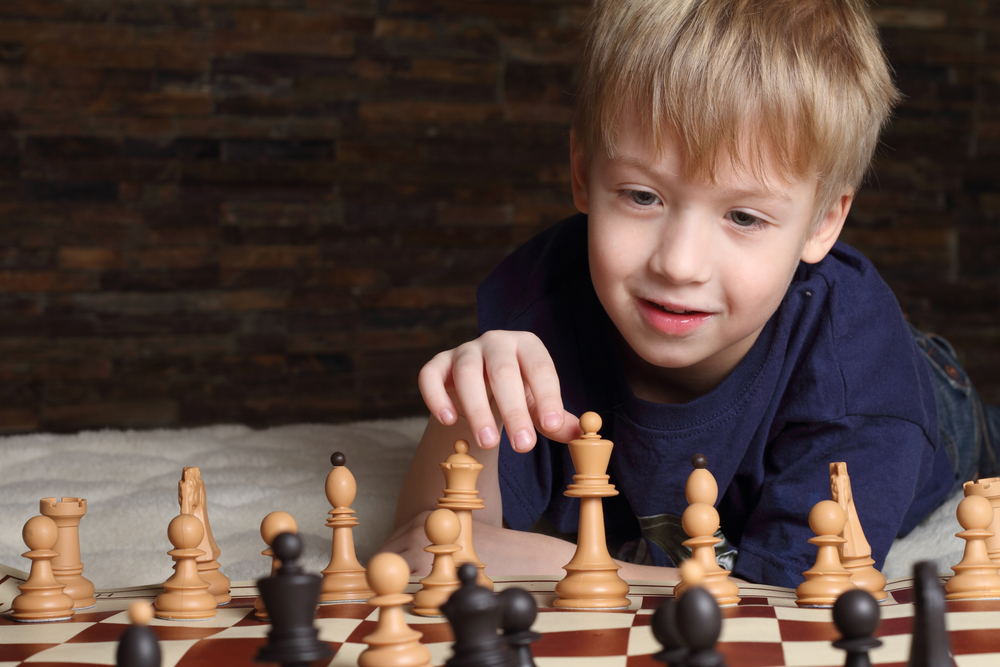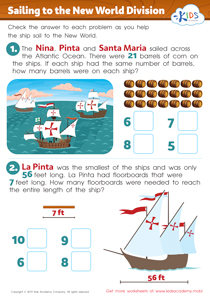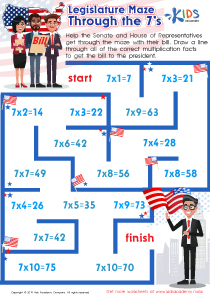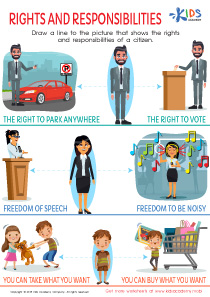Visual recognition Normal Community Worksheets for Ages 5-7
4 filtered results
-
From - To
Discover our Visual Recognition Normal Community Worksheets tailored for children aged 5-7. These engaging and educational worksheets are designed to enhance your child’s understanding of everyday community environments by developing critical visual recognition skills. Each worksheet encourages young learners to identify and match objects, people, and places commonly found in their surroundings, fostering a deeper connection with and appreciation for their community. Perfect for early childhood education, these worksheets blend fun and learning, supporting foundational social studies knowledge and visual literacy. Equip your child with the tools they need to observe and understand the world around them in an interactive way.
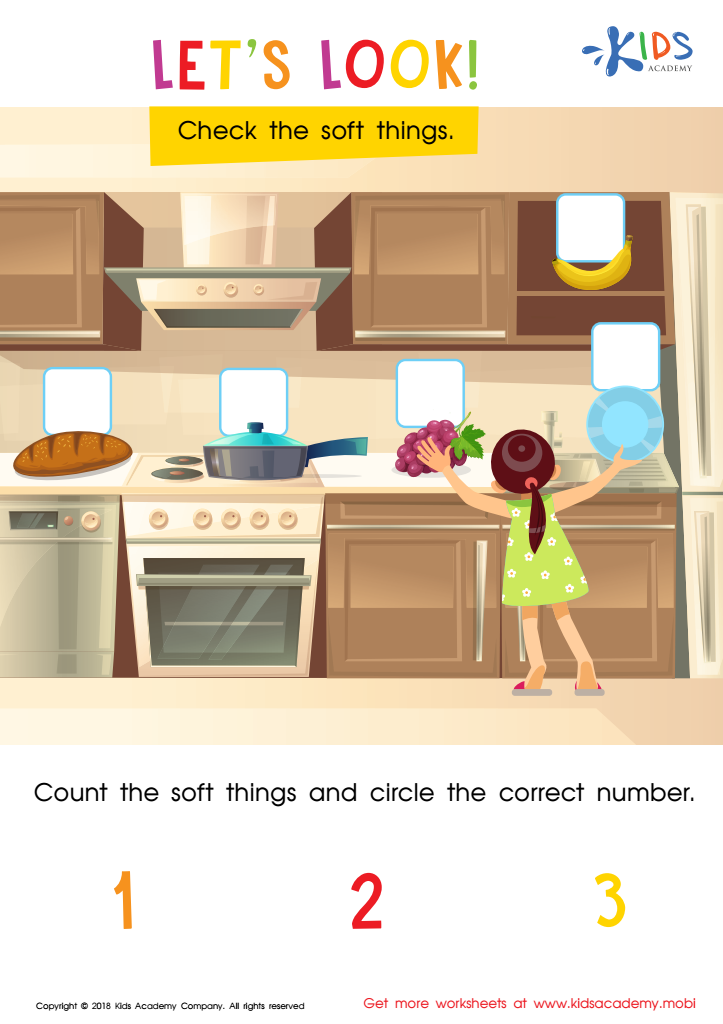

Let's Look! Assessment Worksheet
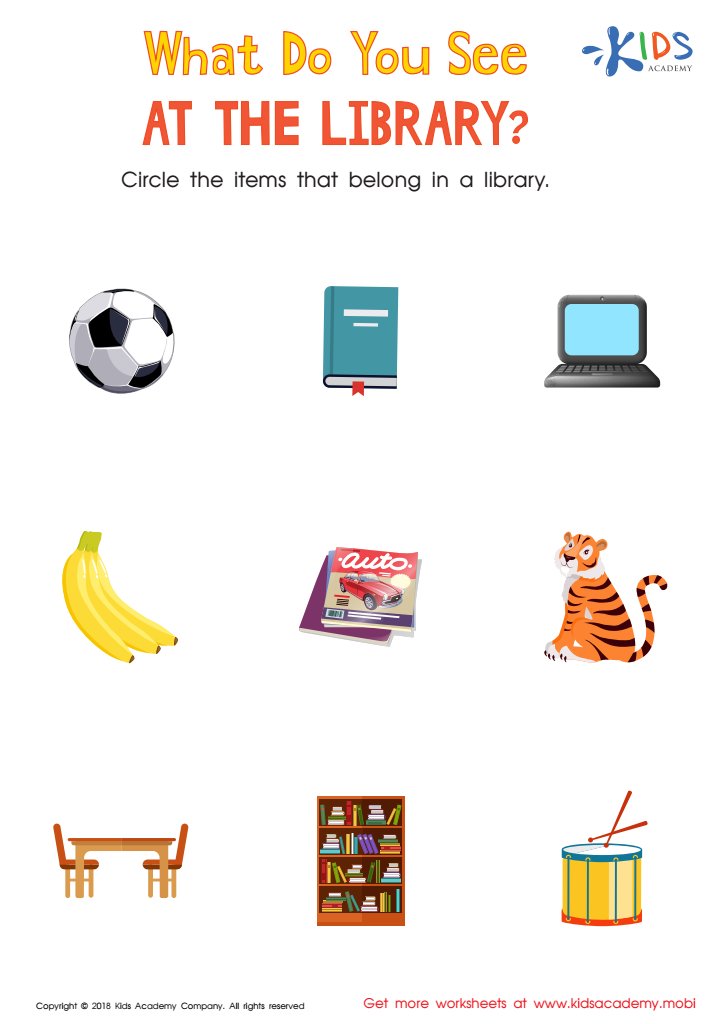

What Do you See at the Library? Worksheet


Skip Counting by 10 Through Our Community Worksheet
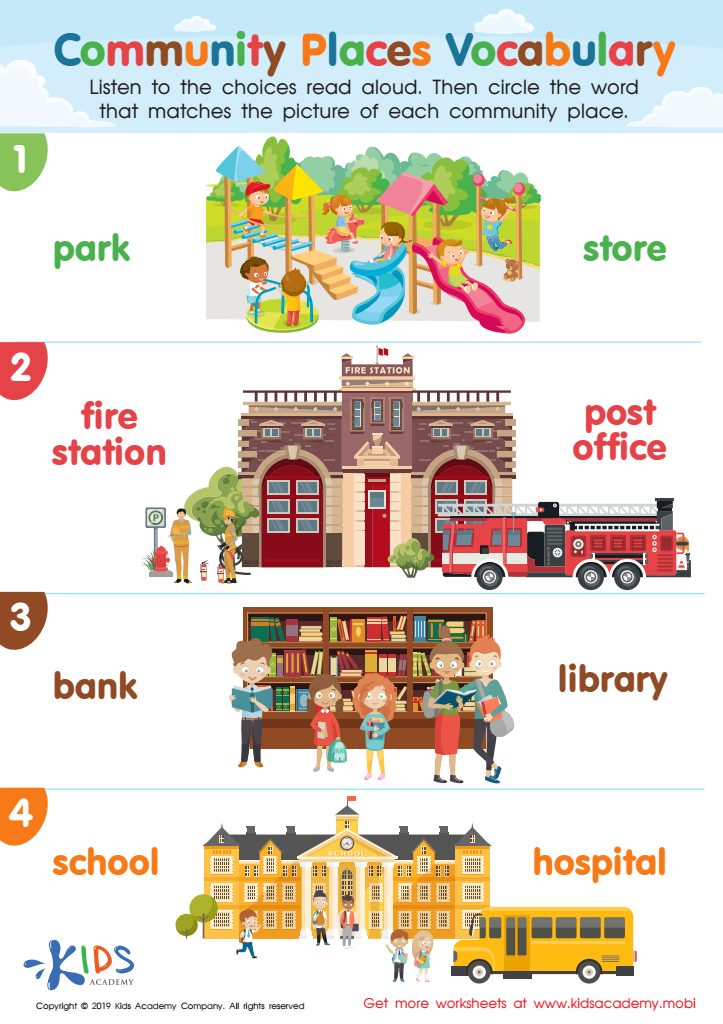

Community Places Vocabulary Worksheet
Visual recognition—the ability to identify and process visual stimuli like shapes, colors, letters, and numbers—is crucial for early childhood development, especially for ages 5-7. This foundational skill plays a critical role in literacy and numeracy. For example, recognizing letters and understanding that they form words is vital for learning to read. Similarly, identifying numbers and understanding basic shapes are essential for developing math skills.
When parents and teachers ensure that children have strong visual recognition skills, they are setting them up for academic success. Children who struggle with these skills may find it challenging to keep up with classroom tasks, leading to frustration and disengagement. Early identification of issues allows for timely intervention, such as vision therapy or targeted educational activities, fostering positive learning experiences.
Furthermore, visual recognition supports cognitive development beyond academics. It enhances memory, attention to detail, and problem-solving abilities. Collaborative activities that involve visual recognition, like sorting games and matching exercises, promote social interaction and teamwork among children.
Ensuring children develop strong visual recognition skills also supports their overall well-being and confidence. When children understand and interact effectively with their visual world, they gain a sense of competence and independence. Parents and teachers thus play a vital role in nurturing these abilities, preparing children for lifelong learning and success.
 Assign to My Students
Assign to My Students







